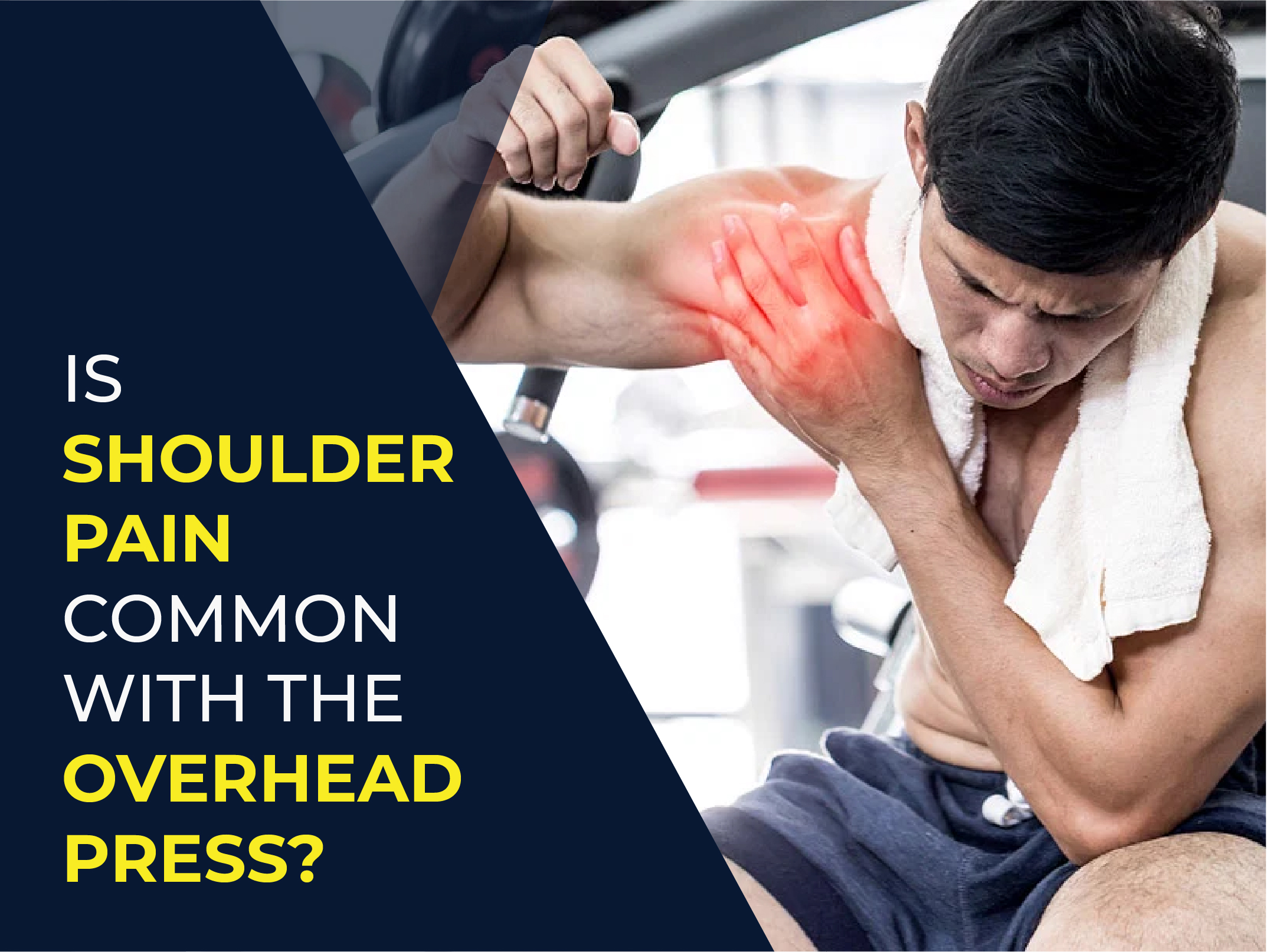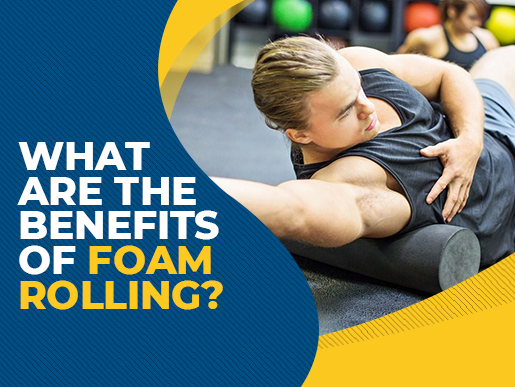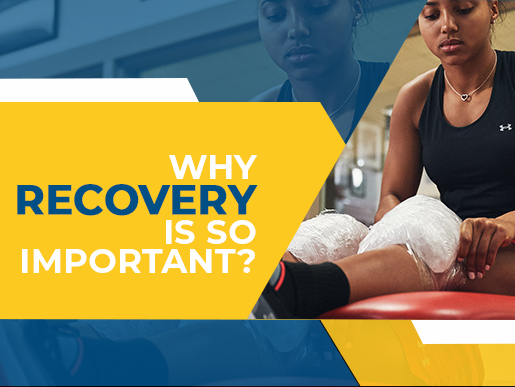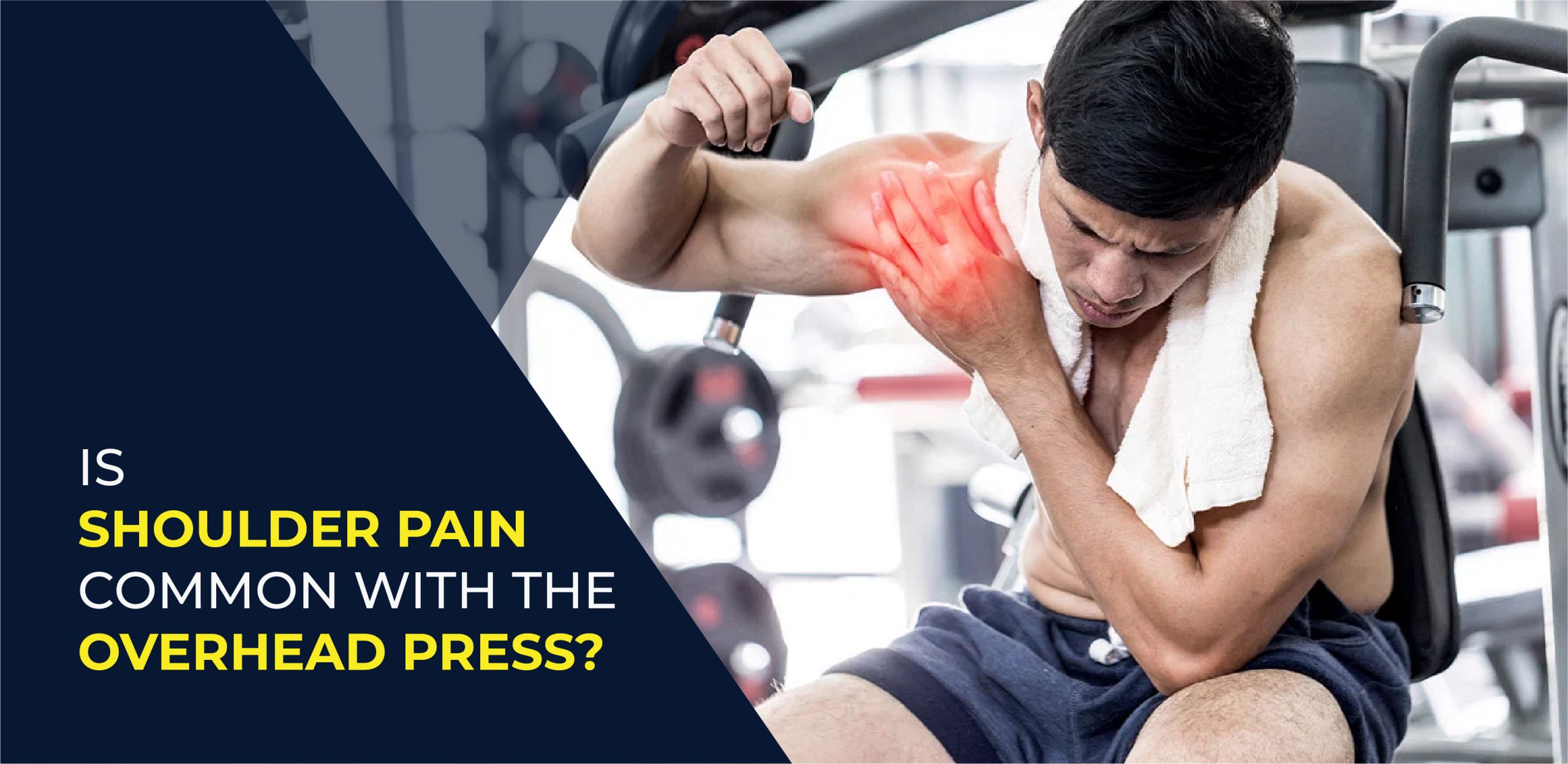
The shoulder joint is a ball and socket joint made up of the upper arm’s humerus and the scapula (shoulder blade). When you lift your arms overhead, the scapula should rotate upwards by gliding over the ribs.
If the scapula is not moving correctly, the rotator cuff muscles must work much harder to get the arm overhead. Over time these muscles become overworked and get irritated, which may lead to pain.
Athletes often complain of pain at the front or outside of their shoulder when lifting overhead and pain when sleeping on the affected shoulder. Most commonly, the pain generator is one of the rotator’s calves’ muscles or tendons. This may cause an athlete to have a weakness with external rotation and abduction motions, they may have inferior scapula or thoracic mobility, or have tight lats.
Managing Shoulder Pain with the Overhead Press
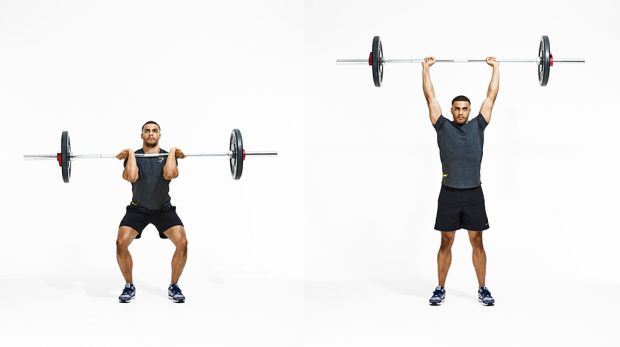
Do You Have the Shoulder Mobility to Overhead Press?
The first thing is first. To achieve an optimal lockout position on the overhead press, you need to possess an adequate amount of shoulder mobility to do so. You do not want to perform and strengthen through a movement if you can’t even get there actively in the first place.
To barbell overhead press, you need to make sure you have:
- Full shoulder flexion
- Scapular upward rotation
- Decent thoracic extension
So, if you’re dealing with shoulder pain with the overhead press, the first thing I would check is to make sure you have the mobility to do this exercise.
A Quick Way to Check Overhead Shoulder Mobility
To assess your shoulder mobility, lie on your back, bend your legs, and flatten out your spine. Grab a stick with the same grip width you’d use on the overhead press, and then see if you can take it all the way overhead without pain.
You have the mobility, or the ABILITY, to get to the overhead lockout position. So, if you’re having shoulder pain with the overhead press and you can get into this position, you can probably rule out mobility concerns.
If, on the other hand, you cannot get into this position, we recommend performing mobility drills to restore it before loading the heck out of a barbell overhead press.
Another great drill to help restore end-range shoulder flexion is the foam roller wall slide. Since you are standing up for this one, you will also benefit from mobilizing into thoracic extension. To perform this optimally, once the foam roller passes your head, work on pushing your torso and head under the roller to encourage end-range shoulder flexion. For this, I would recommend performing higher reps with less hold time. 10-15 reps with a 5-second hold work well for this.
Wall sit backs are an excellent alternative to the foam roller wall slide. These also will help you restore end-range shoulder flexion and thoracic extension as well. To perform:
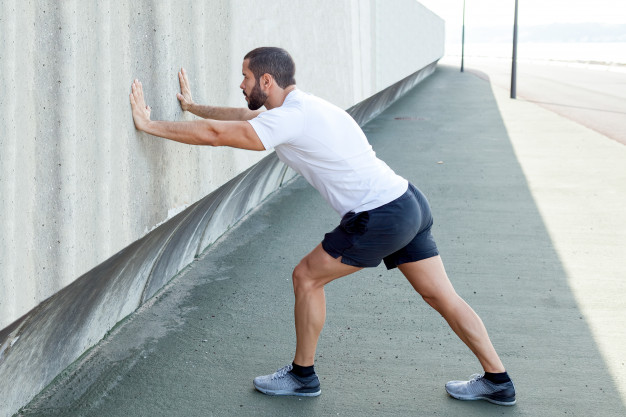
- Stand with your hands on a wall, and then push your butt backward until a stretch is felt in your shoulders and upper back.
- If you were experiencing shoulder pain with the overhead press and determined that you have a shoulder mobility limitation, give some of these drills a try.
- Check the following email for details on what exercises to do to tack weak points.
Experiencing shoulder pain with the overhead press can be a frustrating experience, but it does not have to be a permanent one. If you are dealing with this, here is what I would do:
- First, make sure you have the mobility to perform the overhead press. If you do not, work on mobility and landmine press until it is restored
- If you have mobility and are still having pain,try and adjust the load, programming, or grip width to see if you can make it more tolerable.
- If adjusting the modifiable factors does not work, try a dumbbell overhead press instead. See if you can find an “arm slot” that feels comfortable for you.
- If the overhead motion itself is so sensitized, you may need to remove it temporarily to get it to calm down completely.
Click here to read more Recovery related blogs!.

